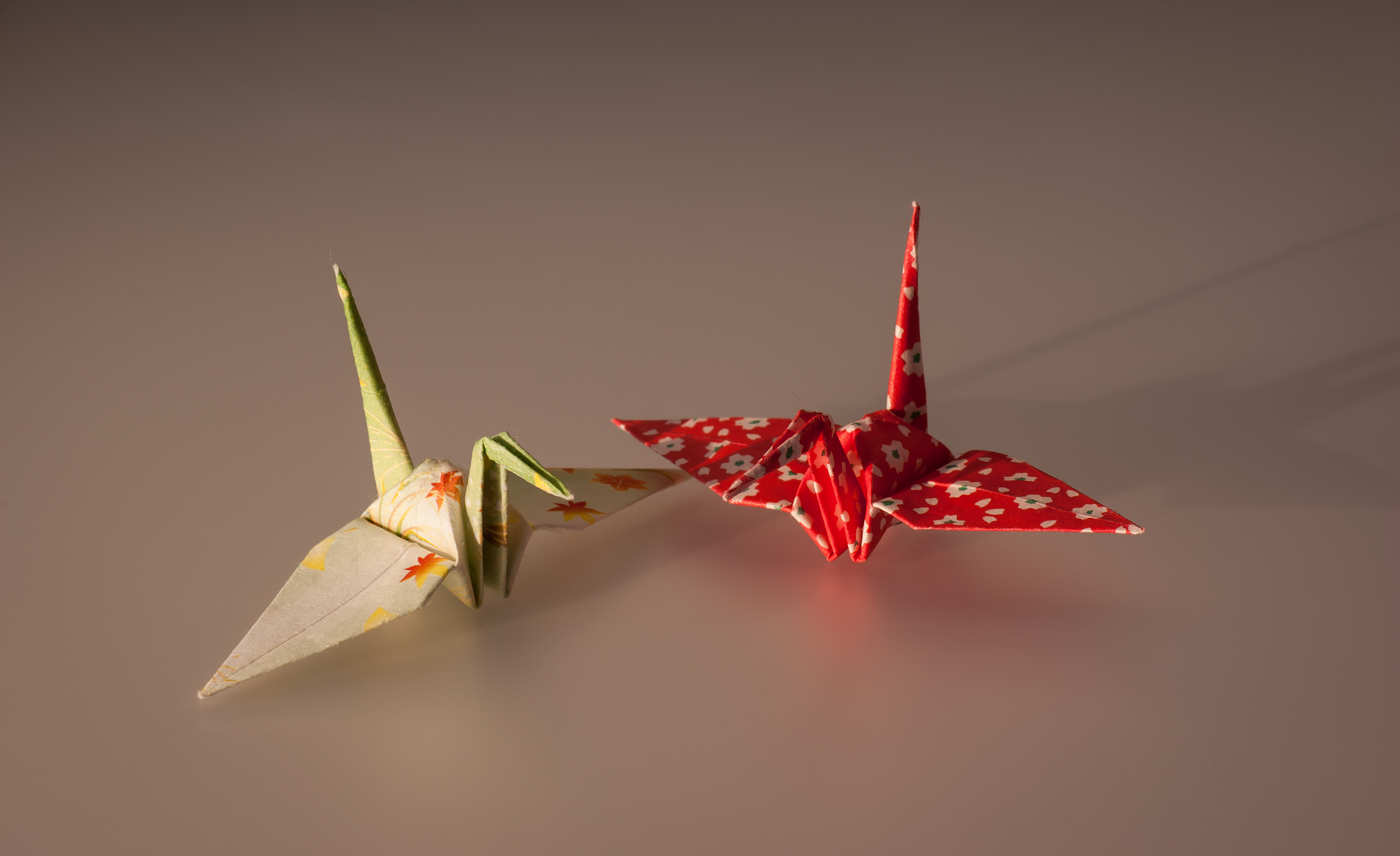Hello everyone! :)
Today, I prepared for you a short article on the Japanese art of origami, in other words- paper folding.
Origami, Ori-folding, and
Kami-paper, is the traditional art of
paper folding formed in China and evolved in Japan. The main goal of this art is to transform a square piece of paper in the finished sculpture through folding and bending of the same paper. The origins of origami are not exactly known, but it's dated to the period 905-1125 AD during the reign of the Sung Dynasty. At the beginning they created dishes, boats and hats made of paper, but later also appeared animals and flowers forms.
Origami technique was
popularized outside Japan in the mid-19th century and since then it has evolved into a
modern art. It's important to know that bonding and paper cutting is not permitted. The most popular sculpture of orgiami
is a crane. ->
In Japan, the first recorded reference on
Origami is in the poem by Ihara Saikaku in 1680, which describes paper
butterflies in a dream. Paper butterflies were used during the celebration of
Shinto weddings to represent the newlyweds, so folding paper already had a
significant role in Japanese ceremonies during the Heian period (794-1185).
Akira Yoshizawa is responsible for a number of innovations in
the art of origami, such as wet folding and Yoshizawa-Randlett created diagram system that describes step by step how to make origami model. Many origami books
describes basics origami techniques which are used to construct models such
as valley or mountain folds.
Standard square origami paper has a size of 2.5cm to 25cm and more. Typically,
one side is coloured and the other one is white. There are also double coloured
sheets with different colors or patterns, which are used for different color
models. It is widely accepted that to creation of origami models are not used
any tools. However, for more complex forms of Origami helpful may be clips,
bone folders that help making sharp bends, and pliers to perform very small
bends.




I admire those people who can create origami. It requires a patience which I do not have :/
ReplyDeleteI totally agree that it is an art that requires patience :). When I tried to make some models at the beginning I was very nervous. Folding origami requires not only patience but also a lot of practice;).
ReplyDeleteThank you for reading my blog; *!